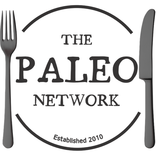A dehydrator is a great way of adding some variety into your Paleo diet. There are loads of great dehydrators on the market, like the Excalibur – but you don’t have to buy a dedicated dehydrator, as you can dehydrate produce directly in your oven.
A dehydrator is an indispensable machine if you want to dry your own products. This enables you to keep food for longer and is especially great if you have just harvested a lot of fruit or veg – or have a lot of meat to use up. A dehydrator is versatile and suitable for different products. The machine works with hot air that is blasted through the food, has an adjustable temperature and is very efficient. In a climate like ours, where the humidity is high, a dehydrator can provide a solution.
With a dehydrator you can build up a supply of food that will keep for a long time – but without the added ingredients of shop bought equivalents. You will have the perfect instrument to make all the fresh products that are only available for short periods of time during the year, sustainable. It is also a lot better for your bank account as you can bulk buy fresh produce when it is in season, or on offer – and make it last for many months.

Dehydrated food is great for people on the go, as the food doesn't weigh very much, so is ideal to take hiking or camping.
You can put pretty much anything inside a dehydrator; vegetables, fruit, meat, herbs, nuts, whatever you like.
Warning: For most products, the temperature should not be higher than 50c (120F) degrees.
Drying meat
Jerky is a great Paleo snack, packed with protein and fat. You can dehydrate any type of meat, either on it’s own or using herbs and spices to add some extra flavor. Biltong and boerewors are popular dehydrated meats in South Africa, which you can make yourself, it your dehydrator. Whilst you can buy jerky, it’s likely to have lots of preservatives – and unlikely to be made from grass-fed high quality meats.
Drying fruit
Try drying your own raisins or dried prunes and apples – or whatever fruit you have an abundance of in the garden. You can also make fruit leather by drying out puréed fruit. Whilst dehydrating fruit concentrates the sugar levels, they can certainly still be enjoyed as an occasional treat.
Drying herbs
A dehydrator is perfect for drying out herbs – great to prevent wastage. If you live somewhere hot & dry, you can dry herbs the traditional way, hung on string, and left out in the sunshine. Collecting the herbs is a fun activity itself, and the prospect of preserving them while maintaining colour and taste, makes it even more rewarding. Nothing is as good as a jar of your own cultured and dried coriander or hot chili peppers, to spice up your dishes for a whole year.
Dehydrating Vegetables
Vegetables are perfect for a dehydrator. Trying making vegetable chips, using kale, carrots or very thinly sliced sweet potatoes. Tomatoes also work really well in a dehydrator, and can be added to recipes for months to come.
How long does the food need to be in the dehydrator?
It totally depends on the amount of moisture inside the product. It can even vary between two items of the same product. Also the size makes a big difference in how long it will take to dry out the food. It’s really important not to cut short the during time, as any left over moisture can result in mould and rotten food. Almost all products need to be dried more than 24 hours, but you should research & experiment further for everything you attempt to dry out.
After drying to products, keep them in airtight pots or bags. Lockable glass pots or mason jars look great as decorations in the kitchen, filled with colourful dried fruit and vegetables.
Have you got a dehydrator, or do you dehydrate things in your oven? I’d love to hear what you do with yours, in the comments below!
























